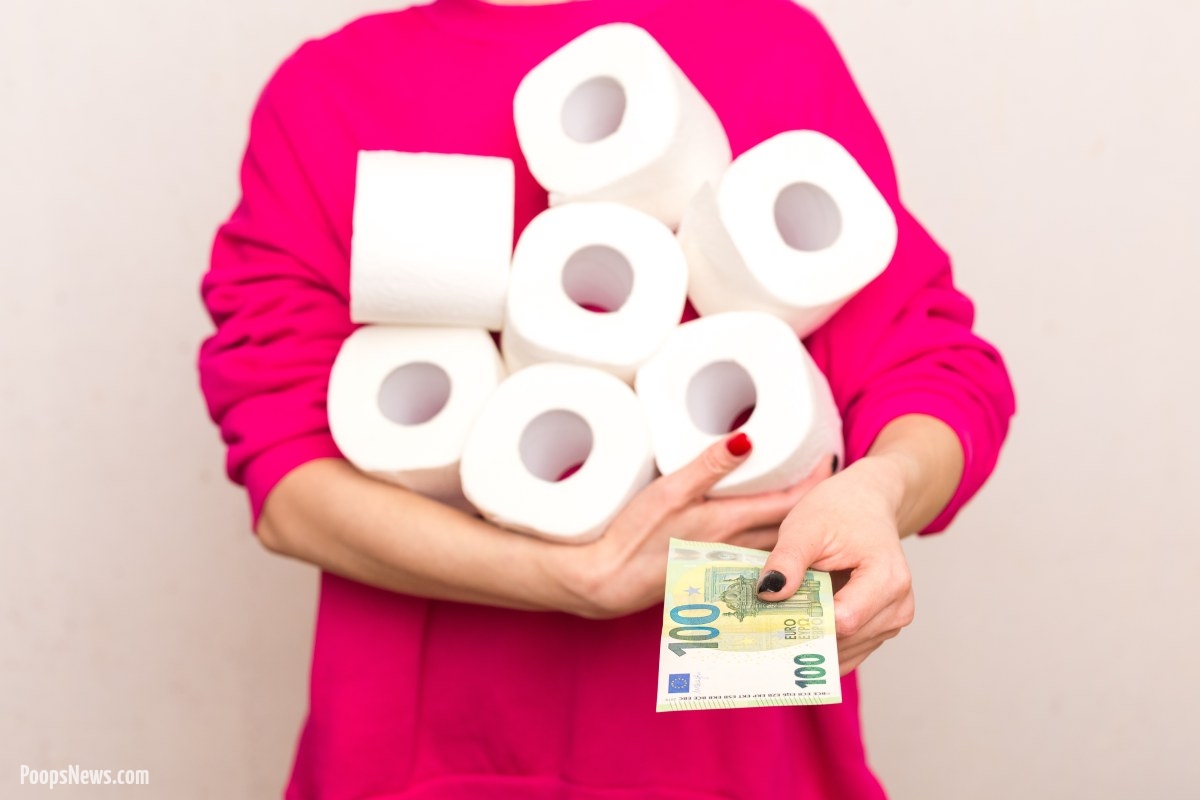In a world of smartphones, self-driving cars, and the latest viral memes, there is one household item that has managed to retain its humble status while quietly playing a critical role in our daily lives: toilet paper. Yes, that seemingly unremarkable roll sitting by the toilet has a storied past, a complex manufacturing process, and an undeniable importance that we often overlook — until it’s not there, of course.
From ancient alternatives to modern innovations, the tale of toilet paper is one of evolution, intrigue, and even luxury. Whether it’s how much we use, where it’s made, or who invented it, toilet paper is full of surprises. So, grab a roll, get comfortable, and prepare to learn more than you ever thought possible about your bathroom’s unsung hero. Here are 10 fascinating facts about toilet paper that will make you think twice the next time you reach for a square (or 10).
1. Toilet Paper is Older Than You Think
While modern toilet paper as we know it was first commercially produced in the United States in 1857 by Joseph Gayetty, the use of paper for personal hygiene dates back much further. In ancient China, records show that in the 6th century, paper was being used for toilet purposes. By the 14th century, during the Ming Dynasty, the imperial family was reported to have used toilet paper measuring 2 feet by 3 feet — talk about living in luxury! Meanwhile, other civilizations used whatever they had at hand — leaves, moss, sponges, and even seashells. Yes, seashells! The comfort of quilted, two-ply softness we enjoy today was a long time coming.
2. The First Toilet Paper Was a Luxury Item
When Joseph Gayetty launched his “medicated paper” for the bathroom in 1857, it wasn’t exactly a hit. Sold in flat sheets and infused with aloe, Gayetty’s toilet paper was marketed as a therapeutic product to relieve hemorrhoids, but it was expensive. At 50 cents per pack, this was no small price in the mid-19th century (about $15 today). As a result, many Americans stuck with the Sears Roebuck catalog or old newspapers for wiping — though using ink-covered pages probably didn’t feel too nice on the skin.
3. Toilet Paper Was Once Considered a ‘Non-Essential’ Item
During World War I and World War II, many items were rationed, from rubber to gasoline. Surprisingly, toilet paper wasn’t considered essential enough to be included on the priority list. Instead, people made do with other alternatives like tissue paper or catalog pages. It wasn’t until after the wars, with the rise of mass consumerism in the mid-20th century, that toilet paper became a must-have commodity. But even then, it wasn’t immune to shortages — remember the great toilet paper panic of 2020? When a pandemic struck, toilet paper was suddenly the star of the show again, proving that the world had learned little from history.
4. Americans Use a Lot of Toilet Paper
Brace yourself: The average American uses approximately 141 rolls of toilet paper per year. That adds up to about 34 million rolls across the U.S. annually — enough to wrap around the planet 50 times. Considering that toilet paper was only first sold in perforated rolls in the late 1800s, it’s amazing how quickly it became an irreplaceable household item. That being said, different countries have different hygiene practices. For instance, bidets are much more common in Europe, where people use significantly less toilet paper. If bidets become more popular in the U.S., we might finally break our TP addiction.
5. Toilet Paper Comes in Different Directions
No, we’re not talking about those debates over whether the roll should be over or under (though surveys show that 70% of people prefer over). We’re talking about the actual direction of the fibers in the paper. That’s right — those little perforations that make it easy to tear? They’re carefully engineered to ensure that you can easily rip off a sheet in one direction. Some manufacturers even design toilet paper to tear more easily when pulled a certain way, providing a smoother experience. In a world where every detail matters, even your bathroom experience is finely tuned for ease.
6. Toilet Paper Manufacturing Is a Big Business
Toilet paper might seem like a simple product, but the process of making it is anything but. The global toilet paper industry is worth more than $30 billion, with major players like Kimberly-Clark (makers of Cottonelle and Scott) and Procter & Gamble (which produces Charmin) leading the charge. The manufacturing process involves pulping trees (or recycled paper), bleaching, and processing the pulp into thin sheets. These sheets are then pressed, embossed, perforated, and wound onto rolls. The machinery used for these processes can cost millions of dollars, which might make you appreciate those few pennies you pay for each square.
7. There’s a ‘Perfect’ Number of Sheets Per Wipe
Research conducted by toilet paper companies has delved into the mysterious world of toilet paper usage patterns. Believe it or not, studies have been done to determine the optimal number of sheets per wipe. According to these surveys, the average person uses about 8.6 sheets of toilet paper per bathroom visit. Of course, preferences vary — some might use a generous handful, while others try to conserve. And then there are the “folders” versus “crumplers” debate. Whether you neatly fold your TP or crumple it into a wad can drastically affect your usage!
8. Toilet Paper Was Once a Taxed Luxury Item in Certain Countries
Before toilet paper became the standard in every bathroom, it was considered a luxury in some parts of the world. During the mid-20th century, toilet paper was so coveted in Cuba that it became a rationed item. In other countries, governments imposed taxes on toilet paper as a way to raise funds. In Zimbabwe, for example, toilet paper was heavily taxed during economic crises, and people resorted to using alternative materials. While most countries no longer tax TP as a luxury item, it’s a stark reminder that what we take for granted is still a privilege for many.
9. The World Record for Toilet Paper Rolls Stacked is Surprisingly High
Toilet paper stacking might not seem like an Olympic sport, but it has its dedicated enthusiasts. The Guinness World Record for the most toilet paper rolls stacked in 30 seconds is a staggering 28 rolls, achieved by Silvio Sabba in 2013. Sabba, a world-record fanatic, also holds records for other TP-related feats, including the fastest time to balance a roll on one finger for 10 seconds. Who knew that the humble toilet roll could lead to such competitive spirit?
10. Some Toilet Paper Is Made From Bamboo
As sustainability becomes an increasingly important factor in product manufacturing, more companies are turning to alternative materials to make toilet paper. Bamboo is one such material. Unlike traditional toilet paper, which is made from trees, bamboo grows rapidly and regenerates easily, making it an eco-friendly choice. Bamboo toilet paper is soft, strong, and biodegradable, and its production has a lower environmental impact than that of traditional paper. As more consumers seek greener options, bamboo TP is growing in popularity and might just be the future of bathroom hygiene.
Final Wipe-Up
Toilet paper — so simple, yet so complex. From ancient civilizations to modern innovations, it has evolved from a luxury for emperors to a necessity for billions. Whether you’re marveling at how much we use, where it’s made, or even the number of sheets per wipe, it’s clear that toilet paper plays a more significant role in our lives than we give it credit for.
So, the next time you find yourself reaching for that roll, spare a thought for the rich history, the cutting-edge technology, and the fascinating trivia behind every sheet. And while you may not stack 28 rolls in 30 seconds or switch to bamboo anytime soon, at least you’ll appreciate that even the most mundane objects can hold a world of interest — especially when they’re found in the bathroom.





